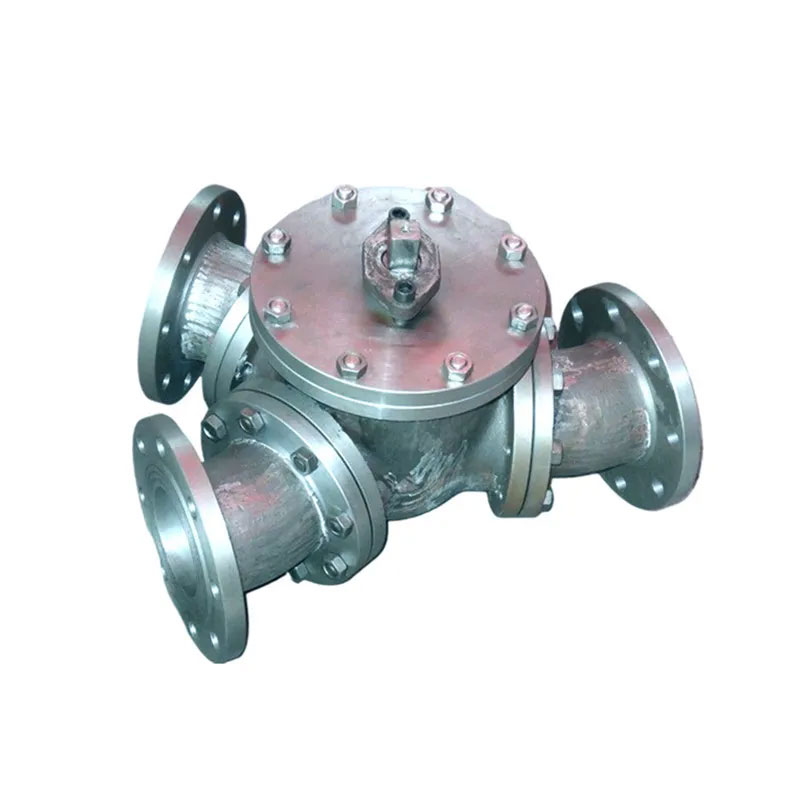Why Choose Three Way Ball Valves for Your Industrial Applications?
2025-09-08
When it comes to modern fluid control, the efficiency of your system depends largely on the quality of the valves you use. Among the many valve types, Three Way Ball Valves stand out as versatile, durable, and easy-to-operate solutions. They are widely applied in industries such as chemical processing, oil and gas, water treatment, HVAC, and food production. But what exactly makes them the go-to option for engineers and procurement specialists? Let's explore in detail.
What Are Three Way Ball Valves?
Three Way Ball Valves are designed to control the flow of liquids, gases, or steam through a system with three ports instead of two. Unlike standard two-way ball valves, these valves offer multiple flow configurations, making them ideal for mixing, diverting, or switching flow directions.
In practical terms, this means that with just one valve, you can:
-
Redirect flow between two different pipelines.
-
Mix two fluid sources into one.
-
Split one fluid source into two directions.
-
Simplify complex piping systems while reducing the number of valves needed.
Key Features and Advantages
-
Flow Control Flexibility: L-port and T-port design options allow engineers to select the right valve based on system requirements.
-
Durability: Manufactured from robust materials such as stainless steel or carbon steel, ensuring resistance to corrosion and high pressure.
-
Easy Operation: Quarter-turn ball mechanism ensures smooth and quick operation.
-
Leak-Tight Seal: Precision machining and PTFE seats provide reliable sealing performance.
-
Reduced Maintenance: Long service life and low wear reduce downtime and replacement frequency.
Technical Parameters of Three Way Ball Valves
When choosing Three Way Ball Valves, understanding the technical specifications is crucial. Wenzhou Joepai Valve Co., Ltd. provides a wide range of models to meet different industrial needs.
General Specifications
-
Valve Type: Three Way Ball Valve
-
Design Options: L-Port / T-Port
-
Body Material: Stainless Steel (CF8M, SS316, SS304), Carbon Steel, Brass (on request)
-
Ball Material: Stainless Steel
-
Seat Material: PTFE, RPTFE, PEEK (depending on application)
-
End Connection: Threaded (BSP/NPT), Flanged (ANSI, DIN, JIS), Welded (BW/SW)
-
Operation: Lever handle, pneumatic actuator, electric actuator
-
Size Range: 1/2" – 12" (DN15 – DN300)
-
Pressure Rating: PN16 – PN100 / Class 150 – Class 600
-
Temperature Range: -20°C to +200°C (depending on material selection)
Sample Parameter Table
| Specification | Details |
|---|---|
| Valve Type | Three Way Ball Valve |
| Port Options | L-Port / T-Port |
| Sizes | 1/2" – 12" (DN15 – DN300) |
| Pressure Rating | PN16 – PN100 / Class 150 – 600 |
| Body Materials | SS304, SS316, CF8M, Carbon Steel |
| Seat Materials | PTFE, RPTFE, PEEK |
| Connection Types | Threaded, Flanged, Welded |
| Operation | Manual, Pneumatic, Electric |
| Temperature Range | -20°C to +200°C |
Applications of Three Way Ball Valves
Due to their flexibility and robust design, Three Way Ball Valves are widely used in:
-
Chemical Industry – Handling corrosive fluids safely.
-
Oil & Gas – Diverting flow between multiple pipelines.
-
Water Treatment Plants – Mixing or distributing clean and wastewater streams.
-
HVAC Systems – Switching cooling and heating circuits.
-
Food & Beverage Processing – Ensuring sanitary fluid transfer.
By integrating Three Way Ball Valves into your system, you can reduce the complexity of pipe networks while increasing operational efficiency.
Why Work with Wenzhou Joepai Valve Co., Ltd.?
Our company has earned trust in the global market with high-quality valve products designed for durability and precision. Here's what makes us different:
-
20+ Years of Industry Experience – Reliable expertise in fluid control solutions.
-
Customized Engineering – Tailored designs to fit specific system requirements.
-
Strict Quality Control – Every valve undergoes testing for pressure, leakage, and durability.
-
Global Supply Chain – Fast delivery and responsive technical support worldwide.
When customers choose Wenzhou Joepai Valve Co., Ltd., they know they are partnering with a manufacturer that prioritizes quality and customer satisfaction.
FAQ: Common Questions About Three Way Ball Valves
Q1: What is the difference between L-Port and T-Port Three Way Ball Valves?
A1: L-Port valves allow the flow to switch between two different outlets, making them perfect for diverting applications. T-Port valves, on the other hand, can connect all three ports simultaneously or allow mixing and splitting of flows, making them more versatile for complex systems.
Q2: Can Three Way Ball Valves handle high-pressure applications?
A2: Yes. Depending on the body and seat material, Three Way Ball Valves from Wenzhou Joepai Valve Co., Ltd. can withstand pressures up to Class 600 (PN100), making them suitable for demanding industrial environments such as oil and gas pipelines.
Q3: How do I choose the right size and material for my application?
A3: The choice depends on flow rate, pressure, and media type. For corrosive fluids, stainless steel SS316 with PTFE seats is recommended. For general water or HVAC systems, SS304 or carbon steel options are cost-effective. Consulting with our technical team ensures you select the ideal configuration.
Q4: Can Three Way Ball Valves be automated?
A4: Absolutely. They can be fitted with pneumatic or electric actuators, allowing remote operation and integration into automated process control systems. This is especially beneficial in large-scale industrial plants where manual operation is impractical.
Conclusion
Whether you require flow diversion, mixing, or distribution, Three Way Ball Valves provide a reliable and efficient solution for complex piping systems. With a wide range of materials, sizes, and connection types available, these valves are adaptable to almost any industrial environment.
If you are looking for premium quality valves, technical support, and competitive pricing, trust Wenzhou Joepai Valve Co., Ltd. to deliver products that meet your expectations. For more details or inquiries, please contact us directly.



